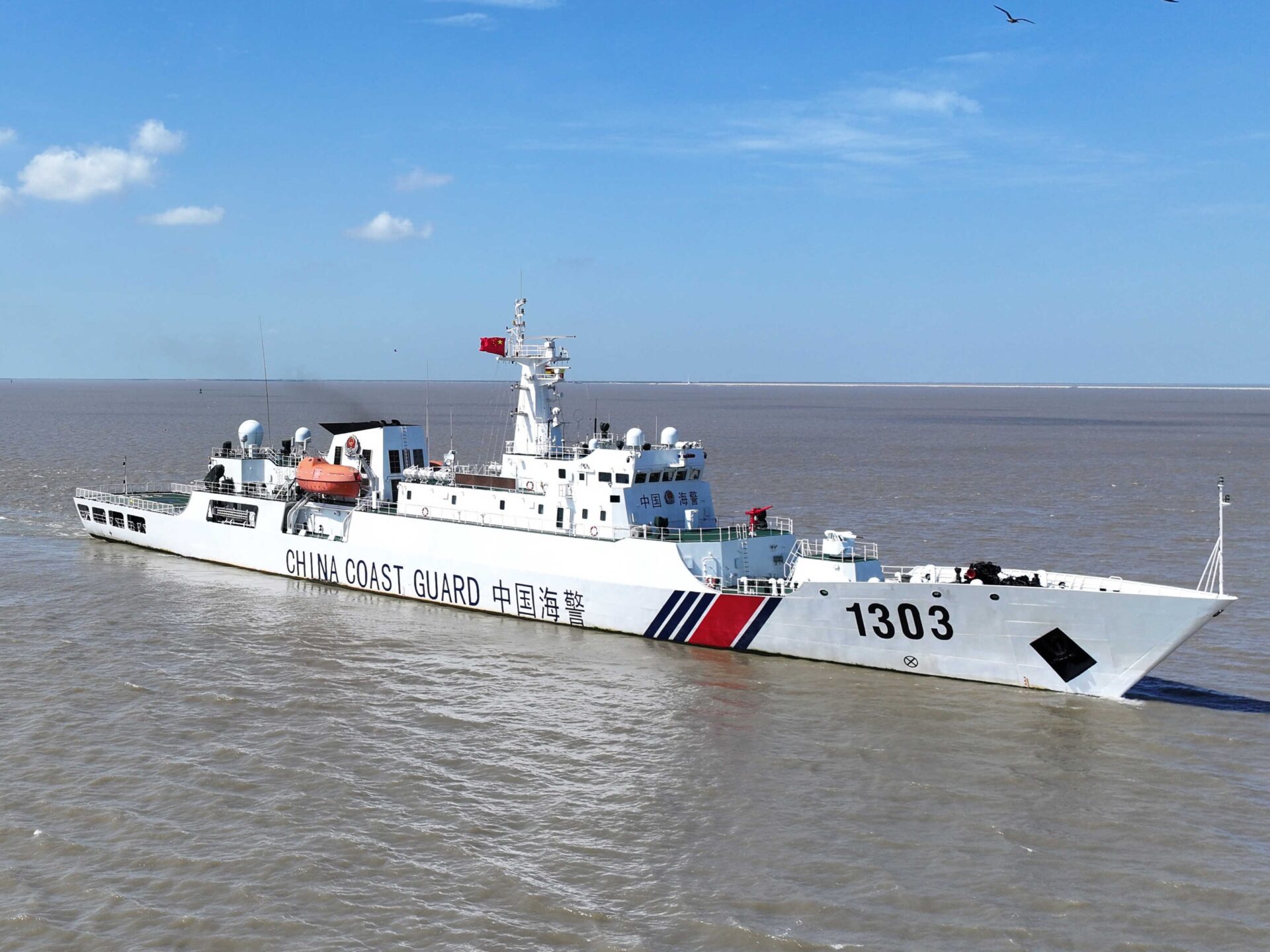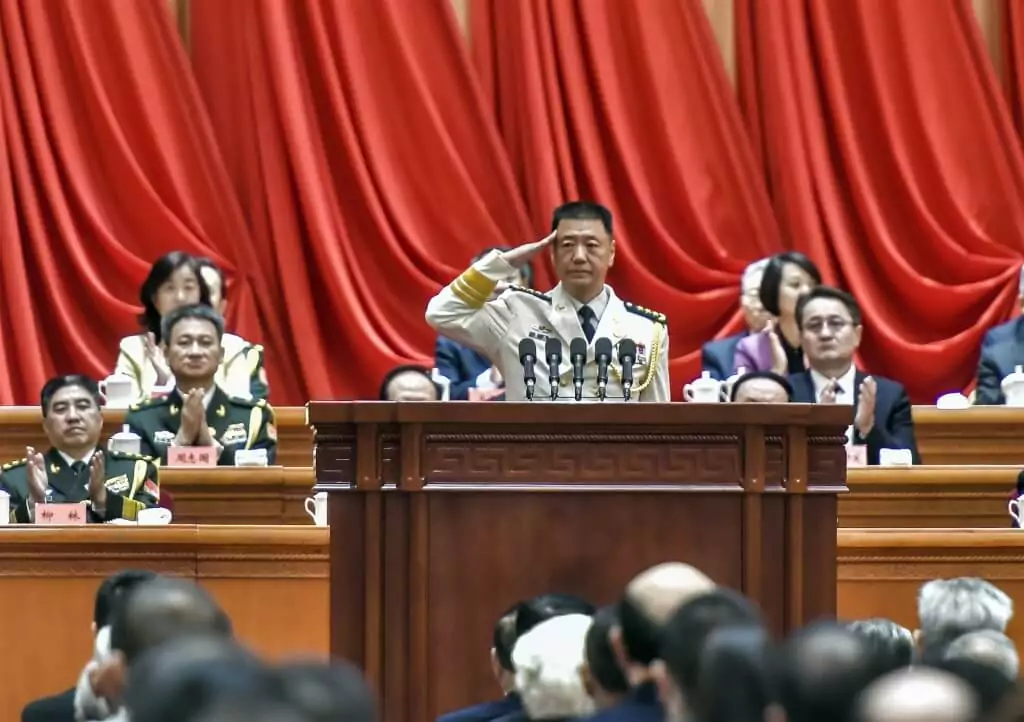
The PLA Navy’s Evolving Posture Beyond the First Island Chain
The PLA Navy’s Evolving Posture Beyond the First Island Chain
Executive Summary:
- The concurrent deployment of the Liaoning and Shandong aircraft carriers beyond the First Island Chain represents a significant strategic milestone, highlighting the People’s Liberation Army’s (PLA) improved capability to coordinate complex naval operations and signaling a shift towards more sophisticated Anti-Access/Area-Denial (A2/AD) operations between the first and second island chains.
- Formation of an operational dual-carrier fleet requires extensive coordination beyond numerical strength, involving integration of escort ships, logistical support, submarines, and carrier-based aviation. The PLA Navy’s recent dual-carrier operations demonstrate a capability previously only fully realized by the United States, positioning the PLAN as a more assertive challenger to U.S. naval dominance.
- Operational differences between the PLAN’s two active carriers reveal distinct strategic roles. The Liaoning, constrained by its limited fighter jet capacity and reliance on substantial escort support, is strategically optimized for surface and ground attack missions. In contrast, the Shandong’s superior fighter jet capacity allows for greater flexibility and sortie frequency, underscoring an evolving naval doctrine toward a model combining Soviet-era missile-cruiser strike tactics with modern carrier air operations.
A dual-carrier drill conducted by the People’s Liberation Army Navy (PLAN) in June, likely part of mid-year long-distance maritime training, showcased the Chinese military’s growing maritime power. It also signaled a direct challenge to U.S. naval supremacy (PLA Daily, July 1; China Brief, July 25). While not explicitly targeted at Taiwan, this maneuver may have aimed at initial force concentration through distant naval patrols, simulating anti-access/area-denial (A2/AD) operations against potential U.S. interventions.
The deployment, which breached the First Island Chain—traditionally considered a defensive barrier established by the United States and regional allies—bears a strong resemblance to the unnamed exercise conducted by PLA in December 2024 (Reuters, December 9, 2024; China Brief, December 20, 2024). During that exercise, the PLAN formed carrier strike groups from diverse naval fleets, deploying them in a dispersed manner before coordinating concentrated attacks.
The simultaneous operation of two carrier battle groups nevertheless lacked clear evidence of a cross-service joint operational mechanism or notable cooperation with the PLA Air Force. This suggests its primary focus lay on long-range maritime navigation and breaching island-chain defenses through single-service efforts, and that the projection of power into distant waters still remains predominantly reliant on the PLAN.
Operational Milestone: Formation of a Dual-Carrier Fleet
The PLAN’s dual-carrier operations indicate a significant advancement in fleet coordination capabilities. Possessing a fully operational dual-carrier fleet (双航母编队) is distinct form merely owning two separate carrier fleets (两支航母编队) that act independently and with distinct areas of responsibility. [1] The U.S. Navy alone currently possesses proven expertise in operating such large-scale integrated dual-carrier fleets.
Dual-carrier fleets demand extensive coordination among escort vessels, logistical support ships, submarines, and carrier-based aircraft, ensuring sufficient manpower and resources for integrated operations. Crucially, they require the seamless merging of two carrier strike groups into a cohesive unit operating in close proximity, involving comprehensive adjustments in escort vessel positioning and substantial improvements in joint carrier-aircraft operations. This enables the simultaneous deployment of several dozen—and potentially nearly a hundred—carrier-based aircraft to conduct coordinated actions within a defined operational area. It also enhances operational resilience and flexibility, for instance by allowing aircraft from one carrier to land on another in emergencies.
Carrier Force Evolving as Blue-Water Operations Escalate
The PLAN’s expanding blue-water capabilities serve broad strategic purposes. Primarily, they are aimed at disrupting or deterring potential U.S. military support to Taiwan in any future conflict scenario. Beijing’s military activities from February through April—ranging from naval deployments in the Western and Southern Pacific to intensified joint combat patrols around Taiwan—represent a calculated, stepwise escalation in both intensity and operational complexity (China Brief, March 11, April 11).
As the PLA’s strategic objectives have expanded beyond routine naval and aerial drills in distant sea areas to encompass anti-aircraft/area denial (A2/AD) operations between the first and second island chains, the differentiated capabilities of its carriers has become clear.
The Liaoning, the PLAN’s first carrier, is increasingly unsuited to modern combat requirements. Its design limits its fighter capacity and it relies on an older ski-jump takeoff system. As such, the aircraft it carries are not the latest J-15T models but rather the older variants (The War Zone, June 10). Moreover, according to multiple close-range surveillance observations by Japan’s Self-Defense Forces, the Liaoning’s peak aircraft launch and recovery rate in recent operations has not shown significant improvement over the last year (Japan Joint Staff, May 28). It can accommodate approximately 24 J-15 fighters, but while its peak operational tempo averages one aircraft flying two sorties per day, one sortie per aircraft per day is more typical.
As the Liaoning often operates within the strike radius of U.S. and Japanese naval assets—compared to which it is operationally inferior—it may be pivoting to align more closely with Soviet-era doctrine. Under this doctrine, missile cruisers and submarines, rather than carriers, constitute the principal offensive assets against surface and land targets. Soviet aircraft carriers primarily served to carry carrier-based aircraft for basic fleet air defense, while the task of striking enemy fleets is delegated to warships equipped with over-the-horizon anti-ship missiles or to submarines that may adopt this approach to penetrate U.S. defenses. This demands a robust escort and logistical formation, which is observable in the Liaoning group’s operations, where advanced vessels such as the Type 055 destroyer, renowned for its sophisticated integrated combat systems and potent anti-ship warfare capabilities, are accompanied by Type 901 and Type 903 replenishment vessels.
The Shandong, by contrast, has additional capacity for approximately 10 fighter aircraft and benefits from enhanced operational flexibility and higher sortie rates. This makes it more suitable for a broad range of mission profiles. These differences suggest that the PLA is assigning separate roles to its two carriers, with the Liaoning focusing on fleet air defense while the Shandong takes on primary roles in surface and land strike missions.
The PLAN’s third carrier, the Fujian, completed another sea trial shortly after the dual-carrier exercise in June. Observations of skid marks on its flight deck suggest that fighter launch tests may have been conducted. Other carriers are in the pipeline, too. Recent reports speculate that a fourth is under construction, and experts have argued that a five- or six-carrier force could be possible in the future (IISS, June 3, 2018; South China Morning Post, February 6, 2019; TWZ, February 13). This would make sense from a tactical perspective. With at least four carriers, one could be deployed in the south to isolate specific areas in the South China Sea; another could be positioned in the Western Pacific to engage potential U.S. intervention in an armed conflict over the Taiwan Strait; and the remaining carriers—presumably two—could be used as training platforms for carrier-based aircraft pilots, perhaps one at a time while the other undergoes regular maintenance. The Liaoning, increasingly inadequate for future combat missions, may transition into such a training role, potentially making the prospective Type 004 carrier the definitive aircraft carrier model for the PLAN.
Conclusion
The PLA’s recent dual-carrier deployment is significant, even if it did not pose a direct invasion threat to Taiwan. As the primary strategic function of PLA carrier deployments in the Western Pacific is explicitly to deter potential U.S. military intervention, it has clear implications for the United States.
Along with Japan and the Philippines, the United States is increasingly likely to emphasize maritime interdiction, strait blockades, and enhanced surveillance within the First Island Chain, potentially including the deployment of land-based anti-ship missile systems as part of strategic maritime containment efforts.
For Taiwan, proactive integration into a cohesive regional joint defense network, incorporating advanced reconnaissance, targeting, and fire-control systems, will likely become paramount considerations influencing future U.S. arms sales. The PLA’s expanding maritime operations thus herald a necessary evolution of regional security dynamics.
Notes
[1] Common practice among nations possessing multiple carriers, such as the United Kingdom, India, and Italy, is to operate one carrier actively while reserving the other for training or maintenance. Despite their naval power, these countries seldom form dual-carrier fleets


